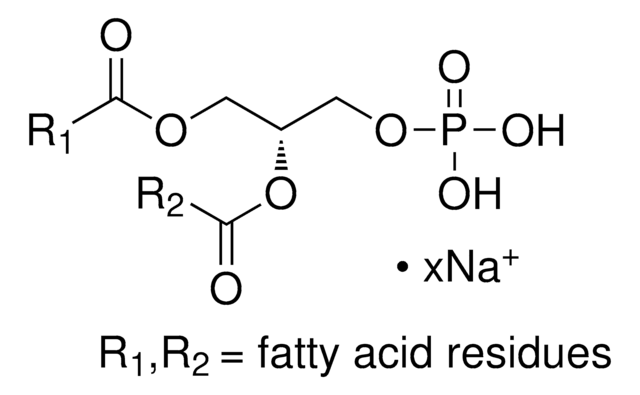31375
Dexamethasone
tested according to Ph. Eur.
Synonym(s):
Dexamethasonum, (11β,16α)-9-Fluoro-11,17,21-trihydroxy-16-methylpregna-1,4-diene-3,20-dione, 9α-Fluoro-16α-methyl-11β,17α,21-trihydroxy-1,4-pregnadiene-3,20-dione, 9α-Fluoro-16α-methylprednisolone, Prednisolone F
About This Item
Recommended Products
agency
USP/NF
tested according to Ph. Eur.
Quality Level
assay
99.6%
form
solid
mp
262-264 °C (lit.)
solubility
water: soluble 10mg/100 ml at 25 °C
acetone: very slightly soluble
alcohol: very slightly soluble
chloroform: slightly soluble
diethyl ether: very slightly soluble
dioxane: very slightly soluble
methanol: very slightly soluble
application(s)
pharmaceutical (small molecule)
SMILES string
C[C@@H]1C[C@H]2[C@@H]3CCC4=CC(=O)C=C[C@]4(C)[C@@]3(F)[C@@H](O)C[C@]2(C)[C@@]1(O)C(=O)CO
InChI
1S/C22H29FO5/c1-12-8-16-15-5-4-13-9-14(25)6-7-19(13,2)21(15,23)17(26)10-20(16,3)22(12,28)18(27)11-24/h6-7,9,12,15-17,24,26,28H,4-5,8,10-11H2,1-3H3/t12-,15+,16+,17+,19+,20+,21+,22+/m1/s1
InChI key
UREBDLICKHMUKA-CXSFZGCWSA-N
Gene Information
human ... ABCB1(5243) , CYP3A4(1576) , IL4(3565) , IL5(3567) , NR3C1(2908)
mouse ... Abcb1a(18671) , Abcb1b(18669) , Ifng(15978) , Nos2(18126) , Ptgs2(19225) , Tnf(21926)
rat ... Ar(24208) , Nr3c1(24413) , Tnf(24835)
Looking for similar products? Visit Product Comparison Guide
Application
Biochem/physiol Actions
signalword
Danger
hcodes
Hazard Classifications
Repr. 1B
Storage Class
6.1C - Combustible, acute toxic Cat.3 / toxic compounds or compounds which causing chronic effects
wgk_germany
WGK 3
flash_point_f
Not applicable
flash_point_c
Not applicable
ppe
dust mask type N95 (US), Eyeshields, Faceshields, Gloves
Choose from one of the most recent versions:
Already Own This Product?
Find documentation for the products that you have recently purchased in the Document Library.
Customers Also Viewed
Our team of scientists has experience in all areas of research including Life Science, Material Science, Chemical Synthesis, Chromatography, Analytical and many others.
Contact Technical Service








